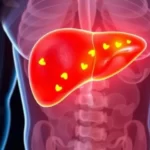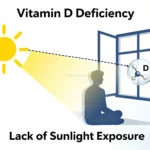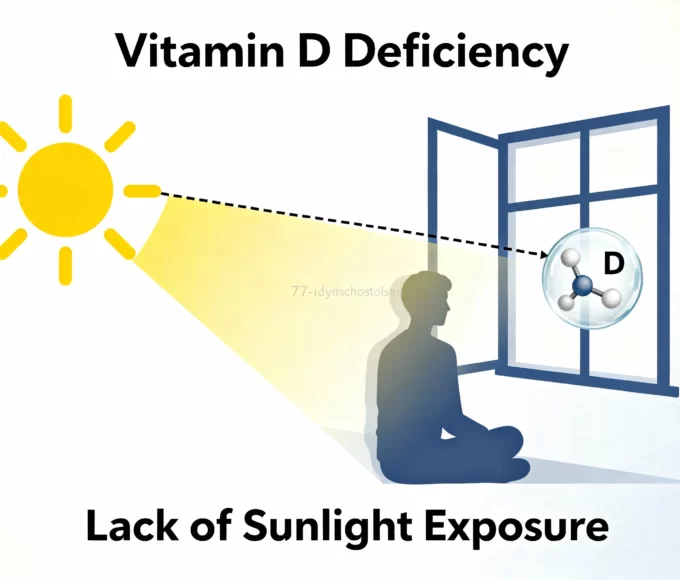Blood clots are a necessary function of the human body that prevents excessive bleeding during injury. However, their formation in the absence of any injury or damage to blood vessels can lead to serious medical conditions such as deep vein thrombosis (DVT), pulmonary embolism (PE), and stroke. Understanding how blood clots from, their risk factors, and how to prevent them is vital for maintaining cardiovascular health.
What Are Blood Clots and How Do They Form?
The blood in our body circulates constantly, driven by the pumping action of the heart. This circulation supports the transportation of oxygen and nutrients throughout the body. When there’s an injury to a blood vessel, platelets immediately gather at the site to plug the leak, releasing chemicals that initiate the clotting cascade. Eventually, this process results in the formation of fibrin, a mesh-like protein that stabilizes the clot.
This biological process is essential to stop bleeding. However, when clotting occurs abnormally, without a wound or visible trauma, it is referred to as pathological thrombosis. The medical term for a blood clot is a “thrombus,” and while it can be lifesaving during injury, it can also have negative implications if formed inappropriately.
Causes of Blood Clots
Blood clots form when there is damage to the lining of a blood vessel or when blood flow is significantly slowed. In some cases, even microscopic damage can initiate the clotting process. Venous thrombosis occurs due to prolonged immobility, causing blood to pool and form clots in deep veins, usually in the legs. If untreated, these clots can enlarge and even migrate to the lungs, resulting in a potentially fatal pulmonary embolism.
Arterial clots, on the other hand, are associated with atherosclerosis—a condition characterized by plaque buildup along the artery walls. This plaque narrows the blood vessels and can rupture, triggering clot formation that can result in a heart attack or stroke.
Blood clots can also form in the heart, particularly in the atrium, during conditions like atrial fibrillation. When blood becomes stagnant, clots may develop and pose a risk of traveling to the brain or lungs.
Risk Factors for Blood Clots
Numerous factors can predispose a person to develop blood clots:
- Immobility: Hospitalization, long flights, or orthopedic injuries can reduce circulation, increasing the risk of DVT.
- Genetic predisposition: Some people inherit a tendency to form clots due to conditions like Factor V Leiden mutation, leading to hypercoagulable states.
- Pregnancy: Hormonal changes and pressure on pelvic veins can increase the likelihood of clot formation.
- Obesity, smoking, and chronic illnesses: These contribute to a higher risk of arterial and venous clots.
Symptoms of Blood Clots
The symptoms depend on the type and location of the clot:
- Venous clots (like DVT): Redness, swelling, pain, and warmth in the affected limb.
- Arterial clots: Severe pain, pallor, loss of sensation, or muscle weakness. A clot in the brain may result in a stroke; in the heart, a heart attack; and in the intestines, ischemic bowel disease, often presenting as bloody diarrhea.
Diagnosing and Treating Blood Clots
Diagnosis may include Doppler ultrasound, CT angiography, and blood tests (e.g., D-dimer levels).
Treatment depends on the clot’s type and location:
- Superficial venous thrombosis: Treated with over-the-counter medications like ibuprofen or acetaminophen.
- Deep vein thrombosis (DVT): Requires anticoagulants like warfarin or direct oral anticoagulants (DOACs). In severe cases, thrombolytic therapy or hospitalization may be necessary.
- Arterial clots: May require surgical intervention or thrombolytics administered directly at the clot site. These interventions are similar to treatments for heart attacks.
Natural Remedies and Lifestyle Support for Blood Clot Prevention
While medical treatment, particularly the use of anticoagulants, is essential in managing and preventing blood clots, integrating specific natural remedies and lifestyle changes can significantly support vascular health and reduce clotting risks over time. These approaches are especially beneficial for people at risk of venous thromboembolism (VTE) due to sedentary lifestyles, travel, or chronic inflammatory conditions.
1. Anti-Inflammatory & Blood-Thinning Foods
Certain foods are known to naturally improve circulation and help regulate clotting mechanisms through their anti-inflammatory and blood-thinning properties. These include:
- Turmeric: The active compound curcumin has been shown in studies to inhibit platelet aggregation and reduce inflammation. Consuming turmeric with black pepper enhances absorption.
- Ginger: Known for its ability to relax blood vessels and prevent platelet activation. Fresh ginger tea or raw ginger in meals can be beneficial.
- Garlic: Contains allicin, which helps lower blood pressure and reduce blood stickiness. Raw garlic or aged garlic extract has shown mild anticoagulant properties.
- Omega-3-rich foods: Fatty fish like salmon, flaxseeds, and walnuts contain omega-3 fatty acids that reduce triglycerides and inflammation, helping prevent arterial plaque buildup and clot formation.
These foods should be part of a heart-healthy, anti-inflammatory diet, but should be used with caution in people already taking blood thinners, as they can amplify effects.
2. Hydration to Maintain Optimal Blood Viscosity
Proper hydration plays a crucial role in maintaining healthy blood consistency. When dehydrated, blood becomes more viscous, increasing the risk of clot formation, especially during long flights, hot climates, or illness. Drinking at least 8–10 glasses of water daily, and even more during physical exertion or travel, helps reduce this risk.
3. Daily Movement and Circulation Exercises
Physical inactivity is a known contributor to deep vein thrombosis. Simple daily movement habits can significantly reduce clot risk:
- Walking regularly, especially after sitting for more than an hour
- Leg stretching or calf pumps during travel or desk work
- Foot circles and heel-toe lifts while seated
- Using standing desks or taking short walking breaks
These micro-movements activate the calf muscle pump, which promotes venous return and prevents blood pooling in the lower extremities.
4. Compression Garments
Wearing graduated compression stockings can help people with varicose veins, post-thrombotic syndrome, or prolonged immobility by supporting venous return and reducing leg swelling. They’re often prescribed after surgery, during pregnancy, or for those with recurrent DVT.
5. Avoiding Risky Lifestyle Factors
Lifestyle choices such as smoking, excessive alcohol, and prolonged sitting or lying down contribute significantly to poor vascular health. Quitting smoking, managing weight, and controlling chronic conditions like diabetes or high blood pressure form the foundation for blood clot prevention.
Blood Clots in Pregnancy:
Pregnancy naturally increases a woman’s risk of developing blood clots, particularly deep vein thrombosis (DVT). This heightened risk is due to a combination of hormonal changes, increased blood volume, and reduced mobility, especially during the third trimester and postpartum period. Estrogen levels rise significantly in pregnancy, which can make the blood more prone to clotting—a physiological adaptation meant to reduce bleeding during childbirth, but one that also raises the risk of thrombosis.
A pregnant woman’s growing uterus also compresses veins in the pelvis and legs, slowing down blood flow and contributing to venous stasis, a major factor in clot formation. This risk is compounded in women with a history of blood clots, inherited clotting disorders like Factor V Leiden mutation, or pre-existing conditions such as obesity, gestational diabetes, or pre-eclampsia.
Symptoms to Watch For
Symptoms of blood clots in pregnancy may vary, but commonly include:
- Swelling, often in one leg
- Pain or tenderness in the calf or thigh
- Warmth and redness in the affected area
- Shortness of breath or chest pain (which could indicate a pulmonary embolism)
Because these symptoms can mimic normal pregnancy discomforts, timely medical evaluation is crucial.
Prevention and Treatment
Preventive strategies play a vital role, especially for high-risk patients. These include:
- Staying hydrated to maintain blood viscosity
- Regular walking or leg exercises, particularly during long travel or bed rest
- Wearing compression stockings to support healthy circulation
- Avoiding prolonged periods of immobility
In cases where a woman has a prior history of DVT or a confirmed clotting disorder, physicians may prescribe low molecular weight heparin (LMWH) injections, such as enoxaparin, as a safe anticoagulant therapy throughout pregnancy and postpartum. These medications do not cross the placenta and are considered safe for both mother and baby.
Postpartum Risk
It’s important to note that the postpartum period, especially the first six weeks after delivery, carries the highest risk of clot formation. Continued use of preventive strategies, close monitoring, and in some cases, extended anticoagulant therapy, may be required.
How Long Does It Take for a Blood Clot to Dissolve?
The dissolution of a clot depends on its size, location, and treatment. Some dissolve in a few weeks, while others take months. With effective anticoagulation and lifestyle support, many clots can be safely managed without long-term complications.
Preventing Blood Clots
Preventative strategies include:
- Maintaining cardiovascular health through diet and exercise
- Avoiding prolonged immobility
- Managing underlying health issues like diabetes and hypertension
- Using compression socks during extended travel
- Quitting smoking
Conclusion
Blood clots are a natural defense mechanism of the body, but when they occur abnormally, they can lead to life-threatening conditions such as DVT, pulmonary embolism, stroke, or heart attack. Understanding their causes, risk factors, and warning signs is essential for early detection and timely treatment. Alongside medical management, healthy lifestyle habits including proper hydration, regular movement, and an anti-inflammatory, diet play a vital role in prevention. With awareness and proactive care, most blood clot risks can be significantly reduced.
“So, what’s my final advice? Please take blood clots seriously, but don’t live in fear. From my clinical experience, I can tell you that awareness and proactive prevention are your most powerful tools. By understanding your personal risk factors, working with your doctor, and making smart lifestyle choices, you can significantly reduce your risk and protect your health. Your cardiovascular health is a lifelong journey, and every step you take to support it matters.”
Frequently Asked Questions
Q1: What are the early signs of a blood clot?
A: Common early signs include swelling, pain, warmth, and redness, especially in the leg or arm. If the clot is in the lungs, symptoms may include sudden shortness of breath or chest pain.
Q2: Can blood clots go away on their own?
A: Some small clots dissolve naturally, but many require medical treatment to prevent serious complications like stroke or pulmonary embolism.
Q3: What causes blood clots without injury?
A: Blood clots can form due to slow blood flow, hormonal changes, surgery, immobility, or genetic clotting disorders—even without visible injury.
Q4: Are natural remedies effective for blood clot prevention?
A: Natural support like turmeric, garlic, omega-3s, hydration, and movement may help maintain circulation, but they don’t replace medical treatment.
Q5: How can I prevent blood clots during long travel?
A: Stay hydrated, stretch your legs, walk when possible, and wear compression socks during long flights or car rides to prevent clotting.
Q6: Is pregnancy a risk factor for blood clots?
A: Yes. Hormonal shifts and reduced mobility increase clot risk in pregnancy. Women with a clotting history may need anticoagulant therapy.
Q7: What foods help prevent blood clots naturally?
A: Anti-inflammatory foods like ginger, garlic, turmeric, salmon, flaxseeds, and berries support healthy blood flow and reduce clotting risks.
Q8: How serious is a blood clot in the leg?
A: A leg clot (DVT) can be life-threatening if it travels to the lungs. Seek prompt medical care for leg swelling, warmth, or unexplained pain.
Medically Reviewed by Dr. Muhammad Usman
References
World Health Organization (WHO). Cardiovascular diseases (CVDs) fact sheet. https://www.who.int/news-room/fact-sheets/detail/cardiovascular-diseases-(cvds)
Centers for Disease Control and Prevention (CDC). Venous Thromboembolism (Blood Clots). https://www.cdc.gov/ncbddd/dvt
National Heart, Lung, and Blood Institute (NHLBI). What Is Deep Vein Thrombosis? https://www.nhlbi.nih.gov
American Heart Association (AHA). Blood Clots and Risk Factors. https://www.heart.org
Mayo Clinic. Deep vein thrombosis (DVT). https://www.mayoclinic.org
Allen HC. Keynotes and Characteristics of Homeopathic Remedies. Homeopathic Medical Classics.
Boericke W. Pocket Manual of Homeopathic Materia Medica.










